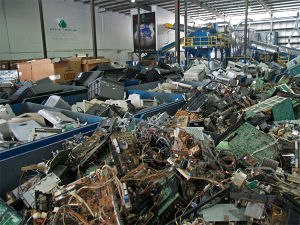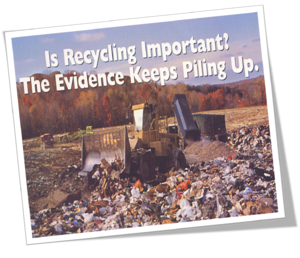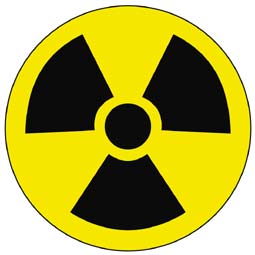T17 Group 1: Murtatha, Sunny, Katie, Maryam
Technology and its Environmental Effects
T17 Group 1: Murtatha, Sunny, Katie, Maryam
Our research will look at many aspects of specific technologies: the many benefits and uses of them, the environmental impact these create, and finally ways to reduce these impacts through selective purchasing and disposal and recycling methods. Technologies chosen may include cell phones and laptop computers. The topic may be narrowed or focused as necessary.
Contents
Technology
Technology made people's life simpler, communication has become very easy thanks to cellphones and computers. These type of electronics has been advancing very quickly and people tend to replace them quiet often.
According to U.S. Cellular statistics,60% of American teenagers own a cell phone. 54% of 8 to 12 years old will have cell phones within the next three years. Technologies like cell phones and laptops become obsolete very quickly. therefore people tend to go through them quickly and tend to replace them often, where do the old ones go? Most people Discard electronics by either storing or throwing them out.
When electronics such as cellphones and laptops are thrown out they tend to impact the environment, however there are better ways to get rid of these electronics and reduce the environmental impact.
Recycling Electronics
What can we do to reduce our environmental impact?
• Reduce
• Re-use
• Recycle
You can reduce your use of power by turning off your electronics while in use. You can also reduce the frequency by which you replace your electronics. Do you need a new cell phone or Ipod every few months? Help products avoid the garbage by selling them, giving them to a friend, or donating them to charity. When electronics finally do reach the end of their useful life, they can be recycled.
The Alberta Recycling Management Authority operates 260 municipal electronics collection sites and six certified electronics processors across Alberta. This program is funded by the environmental fee, the Advance Disposal Surcharge, levied on each electronic item when it is sold. The City of Calgary has teamed up with many local Staples locations to create free residential drop-off centres in Staples stores. Eligible products include:
• Televisions
• Computer monitors
• CPUs
• Laptop, notebook, and tablet computers
• Printers
• Computer accessories including mouse, speakers, keyboard, and cables
Residential services are free of charge and special services for high-volume recycling by businesses can also be set up.
What happens to our electronics when they are recycled? Any eligible electronics are reduced to their commodity states, such as plastics, metals, and glass. They are then used by manufacturers to create new products.
Cell Phone Recycling
Pitch-in-Canada operates a National Cell Phone Collection Program, which takes in phones for both re-furbishing for re-use and recycling purposes. For recent, usable technology, the organization will pay the donor one dollar per donated phone. Collection sites are numerous in each city and can be found on the website: http://www.pitch-in.ca/Ntl%20Cell%20Phone%20Program/1.html.
The Clean Calgary Association also operates a cell phone recycling program. The designated drop-off site is located at: The Ecostore
Clean Calgary Association
809 4th Avenue SW
(403)-230-1443 ext. 222
the environmental effect that products like cell phones, laptops, other electronics have when they are disposed of --> for example, what kind of chemicals and plastic and other waste go into landfills when people just throw things in the garbage? What is the environmental effect.
Toxic levels of Cell Phone Waste
Cell phones and other electronic devices contain many hazardous substances which pollute the environment when disposed of incorrectly. These substances can pollute the air when burned in incinerators, and leach into soil and drinking water when buried in landfills. The toxic substances, which include arsenic, copper, lead, nickel and zinc, among many others, belong to a class of chemicals known as “persistent toxins”. Persistent toxins are chemicals that have the potential to loiter in the environment for long periods of time without breaking down.
The most harmful of the substances is lead because it is a suspected carcinogen and has detrimental effects on the central nervous system, immune system, and the kidney organs. The toxin lead also tends to accumulate in the tissues of plants and animals, causing harm to the food chain.
Most phones also contain brominated flame retardants in the plastic to reduce the risk of fire. They are mostly used in the phones’ wiring, cables, and plastic housings. The flame retarded can also be persistent and can cause the same effects as lead.
Cell phones are also powered with the convenience of a rechargeable battery which also contains a number of highly toxic substances. Through the mid-1990s, the most commonly used battery was the nickel-cadmium batteries. Cadmium has similar effects to lead, and can also cause lung, liver and kidney damages as well as being harmful to wildlife. Because of the high toxic levels, nickel-cadmium batteries are slowly being replaced by lithium-ion and nickel-metal hydride batteries. Unfortunately, these replacements also contain harmful substances such as cobalt, zinc, and copper, which are all heavy metals that can be toxic to plants, wildlife, and humans.
Environmental Aspect of Electronic Equipment
When we are talking about environmental aspect of electronic equipment, we can consider four main areas of interest.
1- Using materials: The environmental impact of that is pollution and energy use from mining and refining of raw materials, using non-renewable energy which is destroyed beautiful scenery.
2- Waste deposit and incineration: the environmental effect on that is pollution of ground water and soil by leaking from waste deposit, also, removal of non renewable energy resources from circulation can have influence.
3- Chemical substances: This has potentially toxic to human and eco system. This is important because of experiences of substances which used in older equipment and now seen as a problem in waste disposal such as PCB (Poly-Chlorinated Biphenyls) and Mercury. In addition, some of the todays electronically equipment has toxicological impact on environment and human that these have long term effect on aquatic organism and environment such as mercury which uses in the wireless technology.
4- Use of Energy: it has pollution from power plants like acid rain, radioactive and other waste etc., also use of non renewable fossil fuels can emit a lot of pollution.
Use of Energy
Graph
As we can see from the graph fossil fuels for energy production are limited resources.
Energy price will continue to rise. It means it takes a lot of cost for ownership and customer to produce and use electronic equipment. As a result, it is important for economics and environmental to design energy sufficient equipment. For instance, the stand by consumption of electronic equipment in private households which is about 10% of total electronic consumption, produce pollution the same as over 1 million cars. Therefore, it needs to pay more attention.
References
-http://www.pitch-in.ca/Ntl%20Cell%20Phone%20Program/1.html.
-City of Calgary Electronics Recycling Information Link:
-Alberta Recycling Management Authority Link:
http://www.albertarecycling.ca/RecyclingMain.aspx?id=72&ekmensel=a681a8bf_8_14_btnlink
-Clean Calgary Cell Phone Recycling Information Link:
http://cleancalgary.org/index.php/highlights/single/cell_phone_recycling/
-Environmental Aspects of Electrical and Electronic Equipment:
http://www.ecodesignguide.dk/html_pages/tutorial/tutorial/tut_back_aspects.html
Murtatha:
-http://www.recyclethis.co.uk/20080128/how-can-i-reuse-or-recycle-a-dead-laptop
-http://www.diabetes.ca/get-involved/supporting-us/project-redial/why-recycle/
-http://www.charitablerecycling.ca/CA/home.asp
-http://www.encorp.ca/electronics/productrecycling
-http://www.centeronmediaandchildhealth.org/mentors/hotTopic.asp?id=70
-http://www.cellphonesforsoldiers.ca/
-http://www.rcto.ca/EMP/EMP.aspx?gclid=CPGcrMmx-JkCFRMUagodSTdbFg
-http://moderateinthemiddle.files.wordpress.com/2009/03/toxic-waste : Image
-http://www.traderscity.com/board/userpix8/3923-bl-battery-nokia-cell-phone-1 : Image
-http://www.racquets-fitness-centre.com/Images/recycle20arrowswglobe20guy : Image




